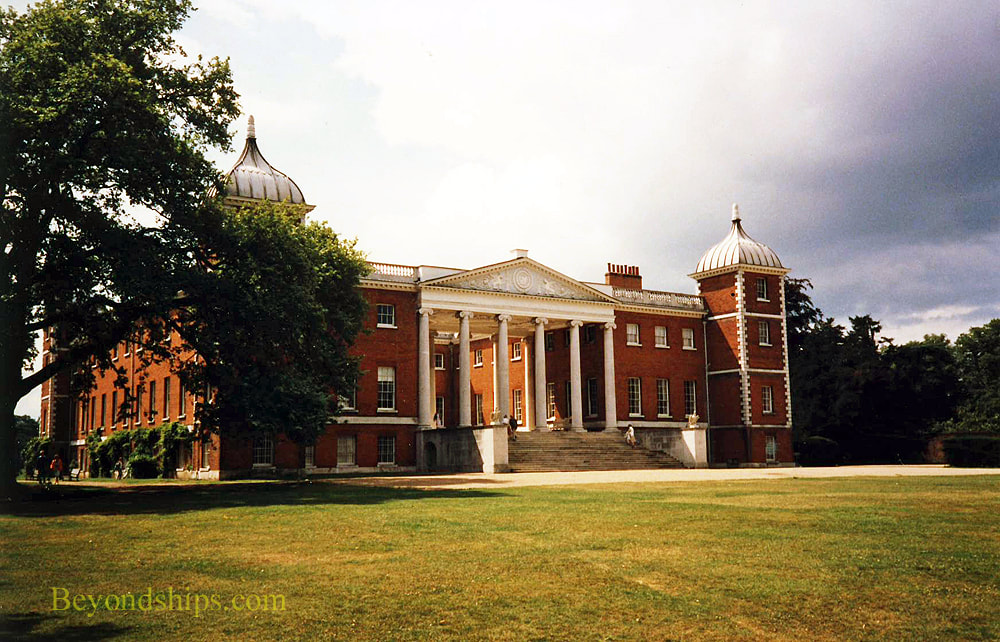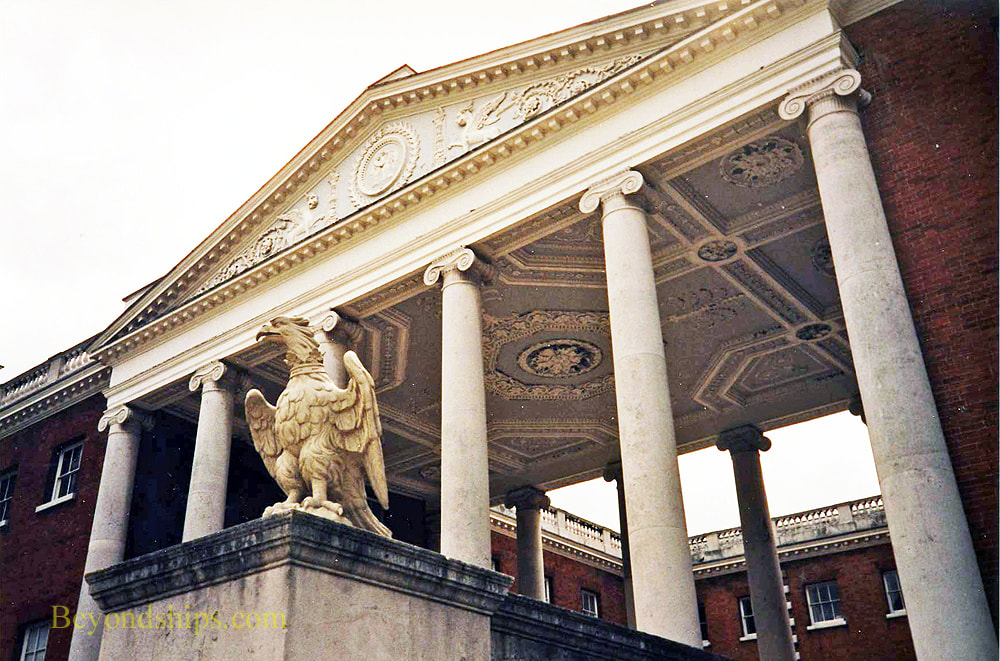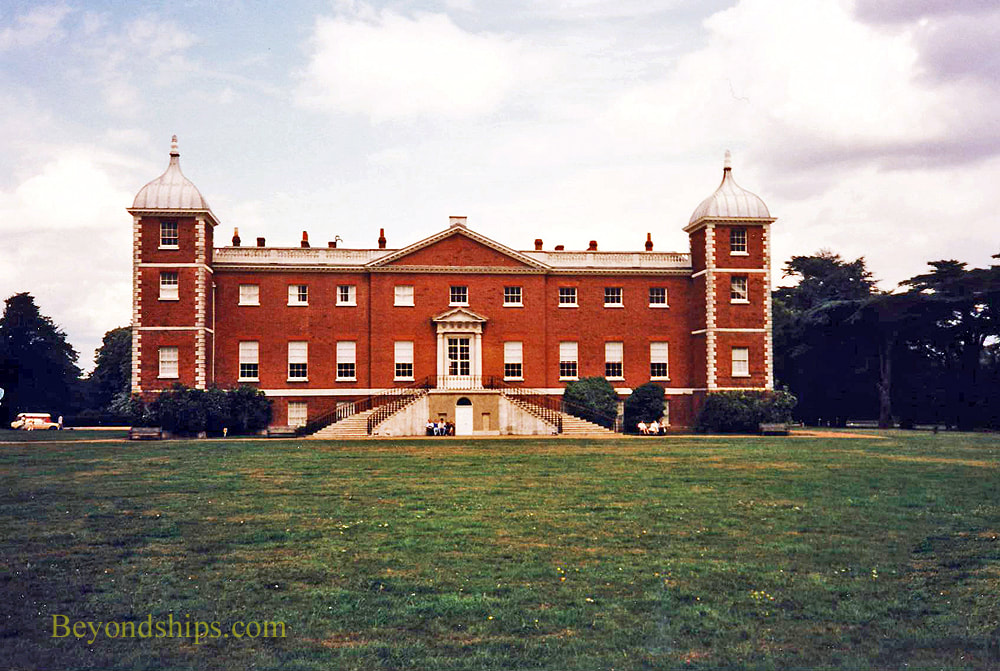|
Osterley Park House is a stately home in western London. When it was built in the 1570s, it was in the country. However, in the interim the city has grown and Osterley is part of the metropolis. Still, the park in which the house sits is one of the largest green spaces in London.
The house was built for Sir Thomas Gresham, a wealthy Elizabethan banker. A rectangular building surrounding a courtyard, the house was considered a palace. Accordingly, Queen Elizabeth I came for a visit. She thought the courtyard too large and suggested that it be subdivided. Overnight, laborers hired by Sir Thomas erected a wall across the courtyard. In the morning, the Queen awoke to see that her suggestion had become reality. Two hundred years later, the family had fallen on hard times. As a result, Osterley passed through a number of hands until it was sold to Sir Francis Child. Child had been apprenticed to a goldsmith firm and had married one of the goldsmith's daughters. With an interest in the firm, he branched out into banking and money lending. This proved so profitable that he gave up being a goldsmith to concentrate on banking. With wealth, position followed and Child was knighted and became a Member of Parliament. He restored Osterley to its palatial grandeur and it became the family seat. In1761, Sir Francis' grandson, who was also called Francis, hired Scottish architect Robert Adam to remodel Osterley. Adam was the leading architect of his day and a champion of the Neo-classical Palladian style. Adam transformed the exterior of the building, adding a large, white Ionic portico, which contrasts with the red brick of the original structure. When Sir Francis died, Osterley was inherited by his brother Robert, who continued to employ Adam. The architect turned his attention to the interior, creating a series of Neo-classical rooms. He also designed furniture for the house. The result was considered quite grand by contemporaries including Horace Walpole. It is considered one of the best examples of Robert Adam's work. Meanwhile, Robert was facing a family problem that had elements not only of swashbuckling romance but also of farce. Robert's only daughter, Sarah Anne, had fallen in love with John Fane, 10th Earl of Westmoreland. Her father did not approve of Fane's gambling. At dinner one evening, Fane asked Robert what he would do if he were in love with a girl and her father refused to consent. Robert replied: “Why, run away with her to be sure!” John took Robert's advice and soon he and Sarah Anne were racing towards Gretna Green, Scotland to be married. When Robert learned that his daughter had eloped, he set out after them. Two men on fast horses were sent ahead. When they came abreast of the lovers' carriage, John pulled out a pistol, aimed it out the window of the carriage but hesitated to fire despite Sarah Anne's urging to do so. While he was considering the matter, the pistol went off striking one of the rider's horses. This was enough to discourage the riders from any further attempt to subdue the lovers. |
Above: The portico on the East Front.
Below: The West Front. Robert, however, was still on the lovers' trail. Passing a detachment of dragoons, John recognized the commander as an old friend. He explained the situation to his friend who then deployed his men so that Robert could not pass. Robert had to give up the chase. Still, to prevent John from getting his hands on Robert's fortuue, Robert changed his will so that his estate would go to Sarah Anne's second-born son or to her first-born daughter, not Sarah Anne or her new husband.
Sarah Anne only had one son and so her daughter Lady Sarah Sophia Fane inherited Robert's considerable fortune. She married the 5th Earl of Jersey. As a result, Osterley passed into the hands of the Earls of Jersey where it remained until the 9th Earl gave Osterley to the National Trust shortly after World War II. He also sold much of the furniture to the Victoria and Albert Museum. The National Trust and the V&A co-operated on restoring Osterley to its 18th century grandeur. Lord Jersey helped with this project and also made gifts and loans of silver, porcelain and furniture. Consequently, not only does the house have the Neo-classical décor designed by Adam but it has much of its original furniture. For more information on visiting Osterley Park House, see the National Trust's website. |
|
|
For more about cruising to England:
Click here for our England home page Click here for our London home page |
Cruise destination - England - London - Osterley Park


